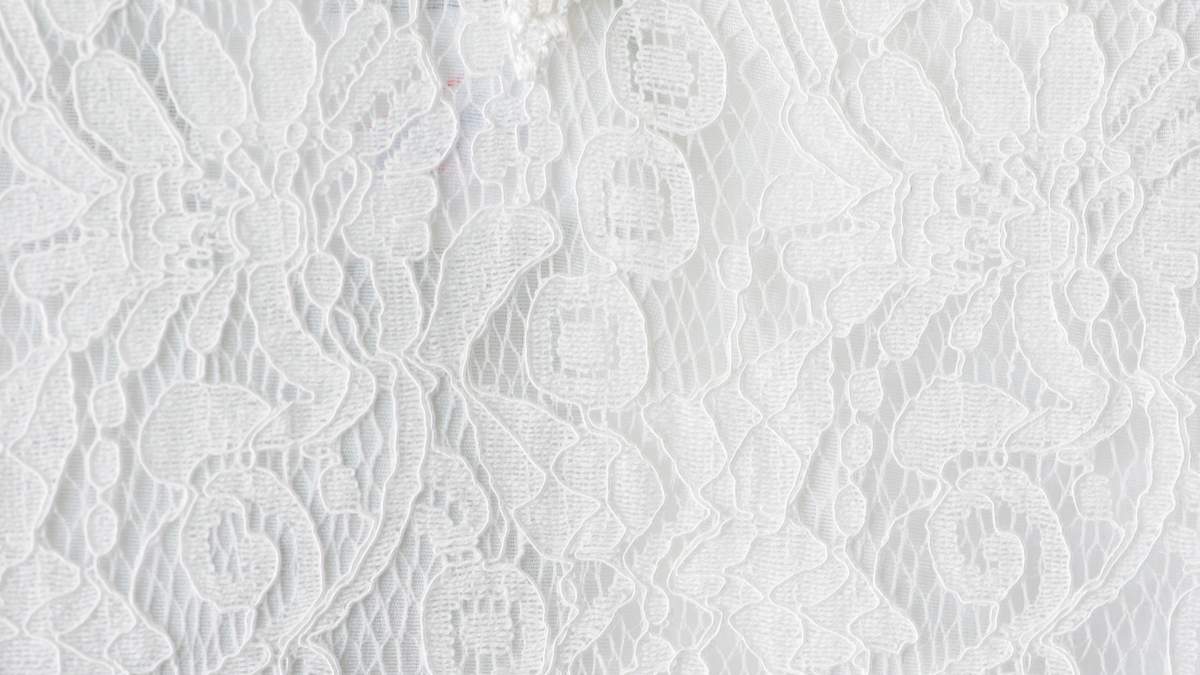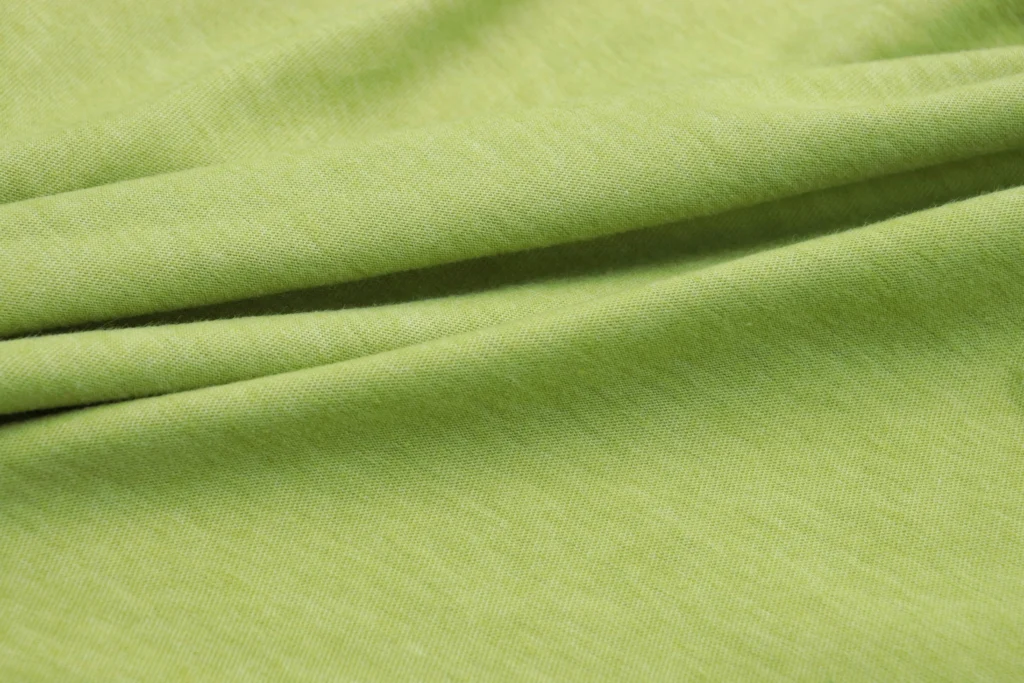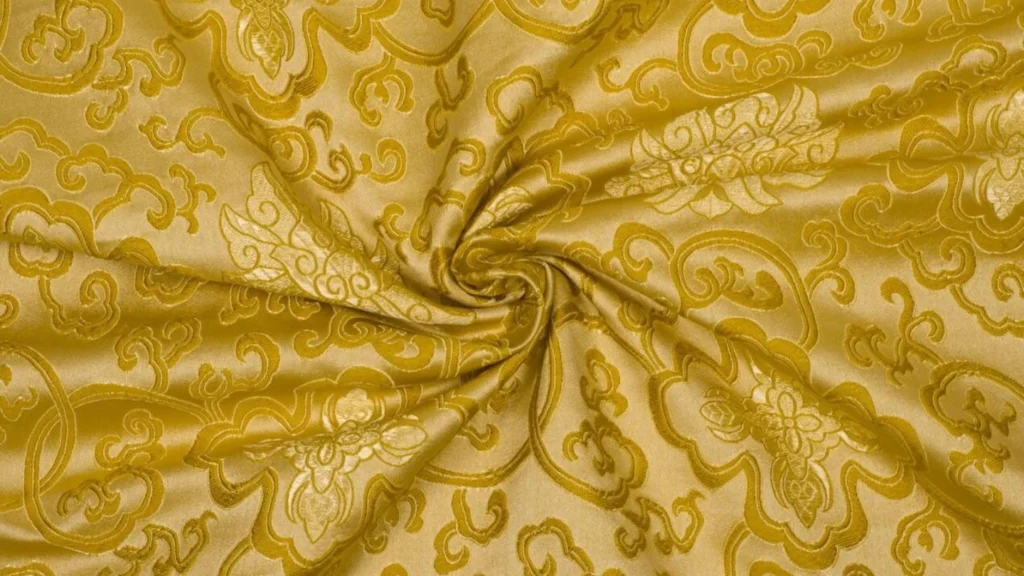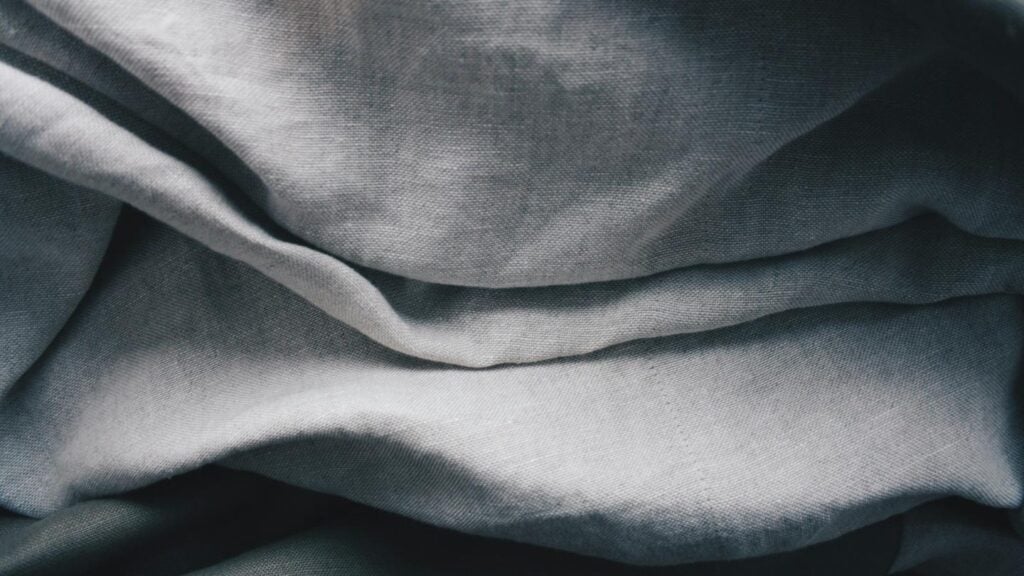2 – Lace Fabric Composition
3 – Lace Fabric vs Other Fabrics
4 – Lace Fabric Is Manufactured
5 – Common Uses in Fashion
6 – Understanding the Environmental Impact of Lace Fabric
7 – Exploring Price Points and Value for Money
8 – Conclusion
9 – FAQs
What is Lace Fabric?
Lace fabric is a delicate and intricate material that has been a staple in fashion for centuries. It is known for its light, open weave and ornamental patterns, often created through a combination of threads like cotton, silk, or synthetic fibers. Lace is typically used in fashion for its elegance and ability to add texture and depth to garments, making it a popular choice for wedding dresses, evening wear, and accessories. But what exactly is lace fabric, and what makes it stand out from other materials?
- Origin: Lace fabric has a rich history that dates back to the 15th century in Europe, particularly Italy and Belgium, where it was first developed as a form of embroidery. Over time, lace became associated with wealth and high status, as it was labor-intensive to make and often used to embellish clothing for royalty and the elite. Today, lace is produced worldwide, with various techniques influencing its style and availability.
- Composition: Lace is made from a variety of fibers, with cotton and silk being the traditional choices for their softness and sheen. More modern versions often incorporate synthetic fibers such as nylon and polyester, which allow for greater durability and lower costs. The composition of the thread used can significantly impact the texture, strength, and appearance of the lace, allowing for a range of effects from delicate, lightweight lace to heavier, more structured pieces.
- Properties: Lace is unique for its open weave, which creates a delicate, almost see-through effect. This transparency gives lace a refined, feminine quality, often used to create soft, romantic looks. Despite its fragile appearance, lace fabric can be quite durable, especially when made from synthetic fibers. The fabric’s flexibility and softness make it versatile, suitable for everything from fine detailing in high-end couture to more casual uses in everyday clothing.

Lace fabric’s enduring appeal lies in its ability to transform any garment into something special, whether it’s adding a touch of vintage charm or a modern twist to contemporary fashion. Its versatility and timeless beauty ensure lace remains a popular choice for fashion designers and consumers alike.
Lace Fabric Composition
Lace fabric is known for its intricate and decorative nature, but its composition plays a significant role in determining its texture, durability, and overall appearance. The material used to make lace greatly influences how it feels, how it drapes, and how it performs in different garments. Let’s explore the common fibers that make up lace fabric and how they contribute to its unique qualities.
- Cotton Lace: One of the most traditional materials used for lace is cotton. Cotton lace has a soft and breathable texture, making it ideal for warm-weather garments and lingerie. Its natural fiber also allows it to be comfortable on the skin and easy to care for, as it’s washable and durable. Cotton lace often has a slightly matte finish, which gives it a more subtle, vintage feel.
- Silk Lace: Silk is a luxurious fiber that adds a high-end, elegant touch to lace fabric. Silk lace is known for its smooth texture and natural sheen, which makes it perfect for evening wear, bridal gowns, and other formal attire. Silk lace is more delicate than cotton and requires careful handling, but it offers a refined look and drapes beautifully. The lightweight nature of silk lace also makes it perfect for layering over other fabrics or using as an accent detail.
- Nylon and Polyester Lace: Synthetic fibers like nylon and polyester have revolutionized the lace industry by offering increased durability and lower cost. These fabrics are often used for lace that needs to withstand frequent use or for more affordable lace garments. Nylon lace has a smooth and silky feel, while polyester lace is slightly stiffer but still retains an elegant look. Both synthetic fibers allow for lace patterns to be produced more easily on machines, making them popular choices for mass production.
- Blended Lace Fabrics: Many lace fabrics are made by blending natural and synthetic fibers. For instance, lace made from a mix of cotton and nylon combines the softness of cotton with the durability of nylon. These blended fabrics offer the best of both worlds—comfort, breathability, and easy maintenance with added strength and elasticity.
- Embellishments and Special Finishes: Lace can also be treated with additional finishes and embellishments to enhance its appearance. For example, some lace fabrics are embroidered with sequins, beads, or metallic threads, adding an extra layer of luxury and design detail. Others may be treated to be more stiff or glossy, depending on the desired effect for a specific garment or design.

Understanding the composition of lace fabric is key to choosing the right lace for your needs, whether you’re looking for a soft, breathable fabric for a summer dress or a luxurious, glossy material for a wedding gown. The fiber choice will impact not only the feel of the fabric but also how well it holds up over time and how it interacts with other materials in the final design.
Lace Fabric v.s Other Fabrics
Lace fabric stands out in the textile world due to its delicate, open-weave design. Here’s how it compares to other common fabrics like silk, cotton, polyester, and velvet:
- Lace vs Silk:
- Appearance: Silk is smooth and glossy, while lace offers intricate, textured detailing.
- Durability: Silk is softer but fragile, requiring careful handling. Lace, especially synthetic versions, is more durable but still delicate.
- Lace vs Cotton:
- Comfort: Cotton is breathable and soft, and cotton lace retains this comfort with added texture.
- Durability: Cotton is durable, while cotton lace requires more delicate care but is less likely to snag.
- Lace vs Polyester:
- Cost and Durability: Polyester lace is more affordable, durable, and easy to care for.
- Appearance: While polyester can mimic other lace types, it lacks the sheen and softness of silk lace but offers more structure.
- Lace vs Velvet:
- Texture: Velvet is plush and rich, perfect for structured garments. Lace is light and delicate, ideal for accents and layers.
- Use in Fashion: Velvet creates bold, luxurious looks, while lace adds elegance and a feminine touch.
- Lace vs Embroidered Fabrics:
- Intricacy: Lace is more delicate, while embroidery tends to have more raised designs.
- Use: Lace is often used for layering and subtle detailing, while embroidery is bolder and adds texture.
Lace’s delicate nature and decorative patterns make it a unique fabric, offering elegance and versatility that sets it apart from other materials.
How Lace Fabric Is Manufactured
Lace fabric can be made through various techniques, each influencing its texture and design:
- Handmade Lace:
- Created through techniques like bobbin or needle lace, where threads are manually interwoven to form intricate patterns.
- This method is time-consuming and expensive but results in high-quality, unique lace.
- Machine-Made Lace:
- Produced using specialized looms that automate the weaving process, allowing for faster production.
- While not as intricate as handmade lace, it is more cost-effective and widely used in fashion.
- Chemical Lace:
- Created by dissolving parts of a fabric with chemicals to form lace-like patterns.
- This technique results in delicate, lightweight lace and is more affordable.
- Crochet Lace:
- Made by hand using a hook to interlock threads, often resulting in textured designs.
- Typically used for casual wear and accessories, offering a handcrafted look.

Each manufacturing method produces lace with different qualities, from luxury handmade versions to more affordable machine-made and chemical lace
Produce your fashion collection with us
Common Uses in Fashion
Lace fabric is widely used in fashion due to its delicate beauty and versatility. Here are some of the most common applications:
- Wedding Dresses: Lace is often used to add luxury and tradition to bridal gowns, with intricate patterns featured in overlays, sleeves, collars, and bodices. Lace is also a popular choice for bridal veils.
- Evening Wear: Lace adds elegance and sophistication to evening dresses, cocktail dresses, and gowns. It’s commonly used as an overlay on satin or silk, creating a beautiful contrast.
- Lingerie: Lace is a key material in creating luxurious and sensual lingerie, from bras and panties to babydolls and corsets. Its lightweight, breathable nature makes it ideal for intimate wear.
- Blouses and Skirts: Lace is often used in blouses, skirts, and dresses to create a feminine, vintage-inspired look. It can be used as a primary fabric or as an accent in trims and panels.
- Accessories: Lace adds a delicate touch to accessories such as scarves, handbags, and shawls, enhancing their texture and visual appeal.
- Home Décor: Lace is used in tablecloths, curtains, and bed linens, bringing elegance and a refined touch to home interiors.

Whether as a focal point or subtle detail, lace enhances the texture and overall aesthetic of fashion and home décor items.
Understanding the Environmental Impact of Lace Fabric
Lace fabric’s environmental impact depends on the materials used and the manufacturing process. Here’s how it affects the environment:
- Material Sourcing:
- Natural fibers like cotton and silk are biodegradable but can require significant water and pesticides.
- Synthetic fibers such as polyester and nylon are made from petroleum-based resources and are not biodegradable, contributing to long-term waste.
- Manufacturing Process:
- Handmade lace has minimal environmental impact but is labor-intensive.
- Machine-made lace is more efficient but relies on synthetic fibers and energy, increasing its carbon footprint.
- Chemical Treatment:
- Chemical lace and dyeing processes use harmful chemicals, potentially polluting water systems.
- Sustainable Alternatives:
- Eco-friendly lace made from organic cotton or silk, and lace using recycled fibers, helps reduce the environmental footprint.
- Bio-based and biodegradable fibers are also becoming more popular in sustainable lace production.

Choosing sustainable lace materials and methods can significantly reduce the environmental impact of lace fabric.
Exploring Price Points and Value for Money
Lace fabric comes in a range of prices, influenced by factors such as material, manufacturing method, and design complexity. Understanding these factors can help consumers and designers make informed choices based on their budget and the quality they desire. Here’s a breakdown of what affects the price of lace and how to assess its value.
- Material:
- Natural fibers like silk and cotton tend to be more expensive due to their high quality, softness, and biodegradability. Silk lace, for example, can be significantly more costly than cotton lace because of the labor-intensive process involved in producing silk.
- Synthetic fibers, such as polyester and nylon, are typically more affordable, offering a cost-effective option for producing lace on a larger scale. These fabrics are durable and easier to maintain but may lack the luxurious feel of natural lace.
- Manufacturing Method:
- Handmade lace is the most expensive due to the time and skill required to craft it. This lace is often unique and can command high prices in luxury markets.
- Machine-made lace is more affordable, as it can be produced faster and in larger quantities. While it may not have the same intricate detail as handmade lace, advancements in technology have allowed for detailed designs at a lower cost.
- Design and Complexity:
- Lace with intricate patterns, special finishes, or embellishments like sequins or embroidery tends to be priced higher due to the additional work required to create these details.
- Simpler designs, such as basic floral or geometric patterns, are usually more affordable and widely available.
- Value for Money:
- When considering value for money, it’s important to balance price with quality. For high-end fashion or special occasions like weddings, investing in premium lace made from silk or intricate handmade designs may be worthwhile.
- For everyday garments or mass-produced items, machine-made lace or synthetic lace can offer a more affordable option without compromising durability.

Overall, the price of lace fabric is influenced by the material, manufacturing method, and design complexity. Understanding these factors can help you choose the best lace for your project or garment, ensuring both quality and affordability.
Conclusion
Lace fabric is a timeless, versatile material that adds elegance and femininity to garments, from bridal gowns to evening wear and accessories. Its composition, manufacturing method, and design complexity influence both its quality and price, offering options for a range of budgets.
Whether made from luxurious silk or affordable synthetic fibers, lace continues to be a symbol of sophistication in fashion. With the rise of sustainable alternatives, eco-friendly lace options are gaining popularity, allowing consumers to enjoy its beauty while reducing environmental impact.

Lace remains a beloved fabric, combining intricate patterns with timeless appeal, ensuring its place in fashion for years to come.
FAQs
- What is lace fabric made of?
Lace can be made from natural fibers like cotton and silk or synthetic fibers like polyester and nylon. The choice of material affects the texture, durability, and price of the lace. - How is lace fabric made?
Lace is created through various methods such as handmade techniques (e.g., bobbin and needle lace), machine-made production, and chemical lace, where parts of the fabric are dissolved to create patterns. - Is lace fabric delicate?
Yes, lace is often delicate, particularly when made from natural fibers like silk. However, synthetic lace is generally more durable and resistant to wear and tear. - How should I care for lace fabric?
Lace should be handled gently to prevent snagging. For lace made from natural fibers, hand washing or dry cleaning is recommended, while synthetic lace can usually be machine washed on a gentle cycle. - What are the uses of lace fabric?
Lace is commonly used in bridal wear, evening gowns, lingerie, blouses, skirts, and accessories. It is also used in home décor, such as tablecloths, curtains, and bed linens. - Is lace fabric sustainable?
Lace can be sustainable if made from organic fibers like cotton and silk or recycled materials. Sustainable lace options are increasingly available, providing more eco-friendly choices. - Can lace fabric be used for everyday wear?
Yes, lace can be incorporated into everyday clothing, such as blouses, skirts, and dresses. It’s often used as a subtle accent or overlay to add texture and femininity. - What types of lace are available?
Lace comes in many styles, including Chantilly lace, Alençon lace, and Venetian lace. These vary in design, pattern, and texture, offering a wide range of options for different fashion needs. - Is lace fabric expensive?
The cost of lace varies depending on the material and manufacturing method. Handmade lace or lace made from luxury fibers like silk is more expensive, while machine-made lace or synthetic lace is more affordable. - Can lace fabric be customized?
Yes, lace fabric can be customized in terms of design, color, and even the type of fiber used. Designers can create unique lace patterns and styles to suit specific garment requirements or personal preferences.







